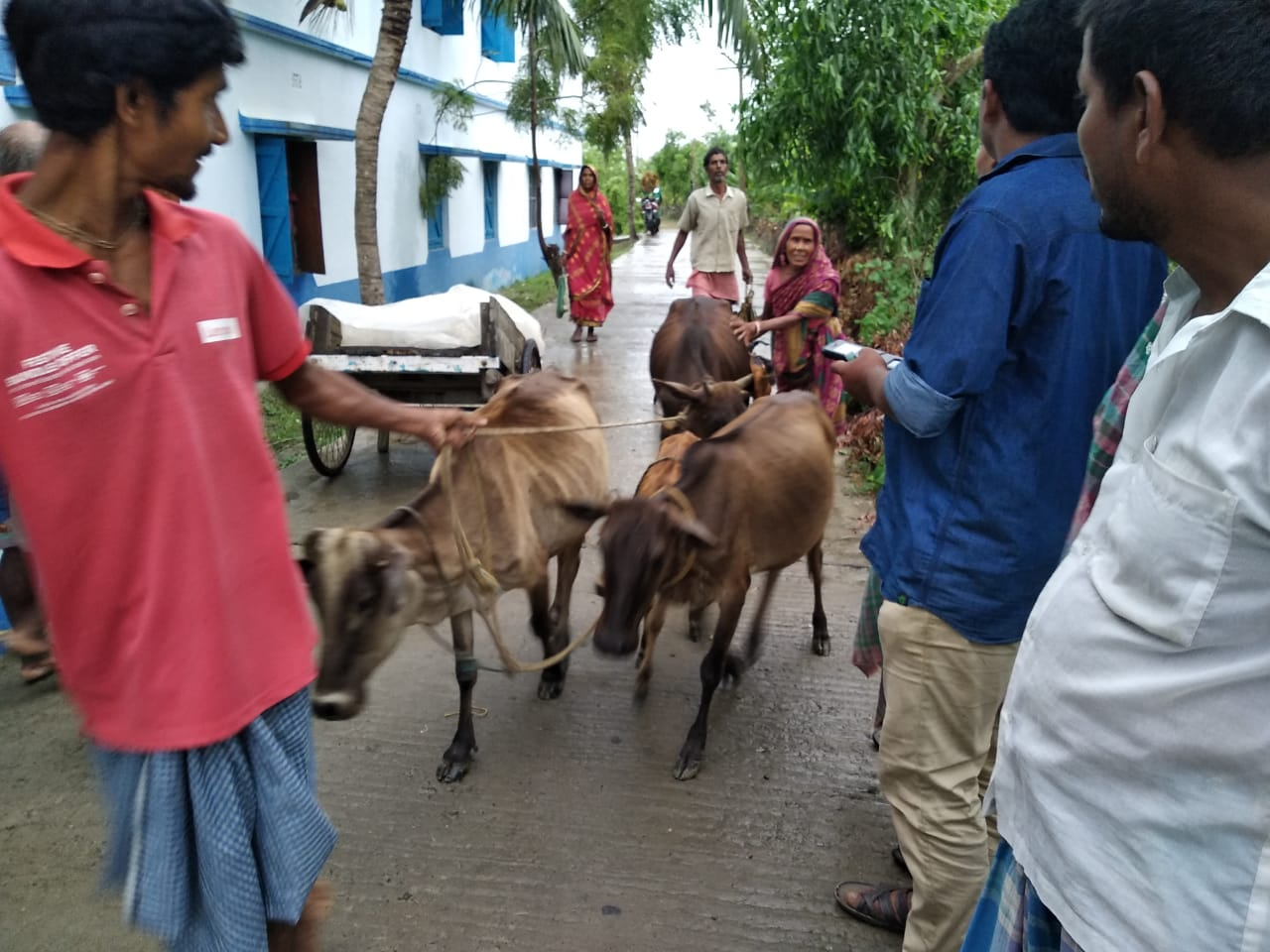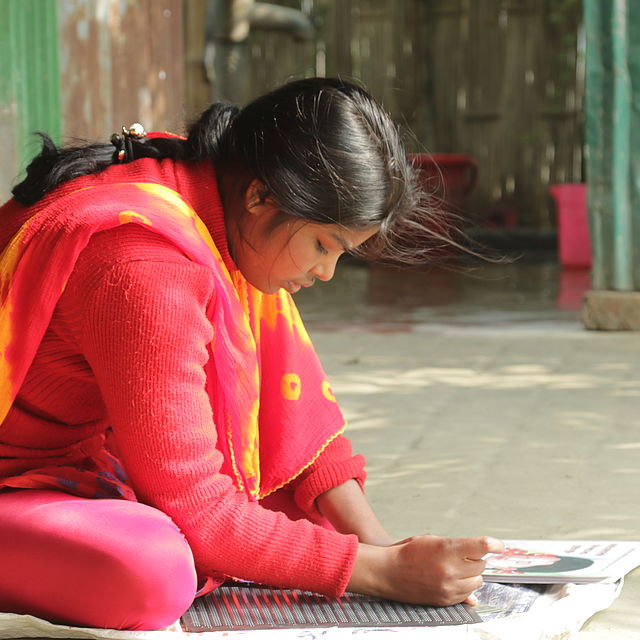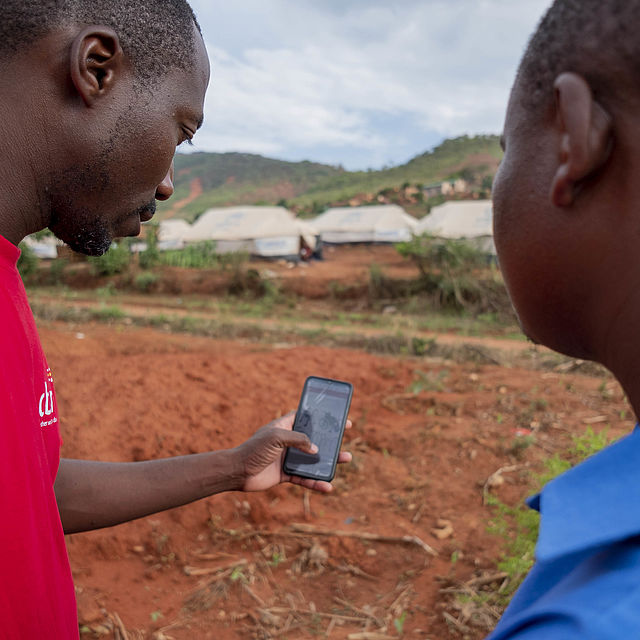Why We Need Disaster Preparedness and Disaster Risk Reduction

CBM and our partner Sundarban Social Development Centre (SSDC) helped evacuate villagers to a safe location before Cyclone Amphan struck in May 2020.
© CBM/SSDC
On the occasion of the International Day for Disaster Reduction (IDDR) celebrated every year on 13 October, we revisit this personal commentary piece by Dr. Rainer Brockhaus, CEO of CBM. The article first appeared in the German magazine 'Welt Sichten' in July 2020.
The outbreak and worldwide spread of COVID-19 since the turn of the year is one of the greatest challenges of our time. The Sendai Framework for Disaster Risk Reduction, adopted in 2015 at a United Nations World Conference in Sendai, Japan, already identifies biological hazards – such as the COVID-19 pandemic – as one of the major risks of the 21st century. CBM has played a major role in shaping the content of the Sendai framework and has successfully worked to ensure that people with disabilities are given special consideration in the document. It recognises people with disabilities as equal actors and calls for data disaggregation by age, gender, and disability. The Sendai framework also requires that all disaster preparedness measures be followed by a "universal design": products, devices, systems and services should be designed in such a way that they are as usable as possible for all people. But, given the global challenges posed by the COVID-19 pandemic, we must ask ourselves: are governments and aid agencies sufficiently prepared for such major crises? What can they do in advance to minimize the negative consequences and reach the people who need help most in an emergency? Only if there are answers to these questions can the "Leave no one behind" principle of the 2030 agenda also be met in disaster preparedness.
People with disabilities are particularly affected by disasters and are usually at the back of the distribution line in the truest sense of the word. They are often among the poorest of the poor and live from hand to mouth. Accordingly, they have little chance of stockpiling food for several days. For example, curfews or the collapse of food trade systems quickly have life-threatening consequences for them. Health systems in developing countries are often inadequate: there are already so many barriers that people with disabilities rarely see a doctor – let alone during a crisis. Therefore, to protect their lives, it is essential to take into account the special needs of people with disabilities in disaster preparedness and to put the requirements of the Sendai framework into practice. Inclusion is not only the task of disability organisations but is the joint responsibility of all.
Disaster preparedness initiatives around the world have already starting to involve people with disabilities in the necessary planning processes. Let’s take the example of a project in Bangladesh. This country is hit by disasters every year, from hurricanes in the south to floods in the north. A community-based inclusive disaster preparedness project funded by CBM includes people with disabilities in management processes. They along with other project leaders work with communities to identify disadvantaged groups and identify their needs and skills. With this knowledge, all people with disabilities and their families were evacuated early and brought to safety during the recent floods caused by Cyclone Amphan in May 2020. The construction of storm-proof and barrier-free and accessible houses as well as shelters or the creation of evacuation plans in Braille are further examples of how disaster preparedness can be designed inclusively. It is important to cooperate as early and comprehensively as possible with local communities and to closely link disaster preparedness measures with other inclusive development projects.
There is still a lack of holistic preventive measures to reach all human beings, particularly in the case of outbreaks of epidemics and pandemics. COVID-19 has made it clear that we need it more than ever. Because of all kinds of disasters (natural or man-made), thousands of people lose their lives or their belongings every year. It is not enough to take action only when the crisis appears. Good and early preparation saves lives – especially those of particularly vulnerable people.
International Day of Disaster Risk Reduction

The International Day of Disaster Risk Reduction is celebrated every year on 13 October. This year, the focus is on public health, disease outbreaks as well as disaster risk governance in the context of the COVID-19 pandemic.
Read about our work in disaster risk reduction
New Disability-inclusive Disaster Risk Reduction (DiDRR) Application

Last year, we launched the inclusive DRR hands-on-tool app (both mobile and web based). This new app ensures accessibility and inclusion of persons with disabilities in disaster risk reduction programs of government and NGOs worldwide.
Check out the app here